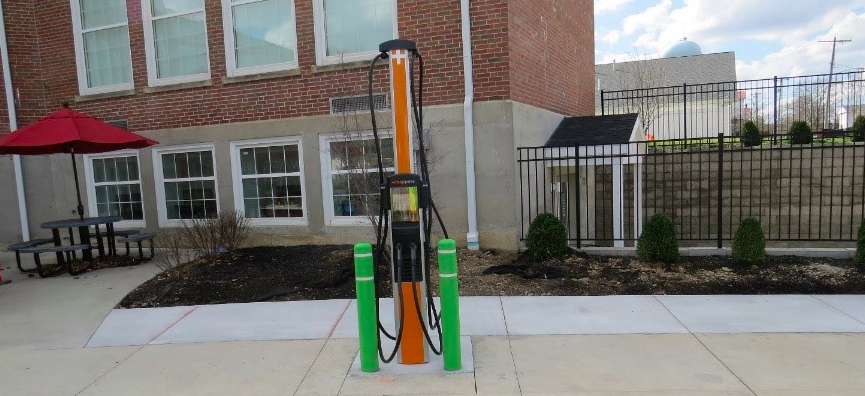Lessons Learned: Electric Vehicle Charging Station

A fleet sustainability for the transition of the Electric Vehicle Charging Station for electric vehicles requires advanced planning and project coordination.
Fleet Managers and/or Site Management must work together to determine the Electric Vehicle Charging Station (EVCS), including project timeline, locations, equipment type, and the implementation process based upon existing and forecast site vehicle utilization.
Discussion In December 2022, North Wind Dynamics, LLC (NWD) was tasked with the installation of 13 Electric Vehicle Charging Station, with expansion capabilities of 15 additional charging stations across six physical locations at the U.S. Department of Energy (DOE) Portsmouth Gaseous Diffusion Plant (PORTS) site, as part of DOE’s fleet sustainability transition efforts.
A number of planning considerations were evaluated in the planning and coordination phases of the project. Analysis: Successful EVCS installation begins with advanced planning, requires coordination, and ends with project execution.
Recommended Actions for Electric Vehicle Charging Station
Consider the following planning elements:
1) Work with Fleet Managers and/or Site Management to determine EVCS timeline requirements associated with a charging station implementation plan based upon site vehicle needs. a. Determine the number of plug-in hybrids vehicles and all-electric vehicles on site for each condition below: i. ii. iii. Existing vehicles on site and charging requirements/charging station configuration. Short-term plan(s) or forecast of additional electric vehicles to be acquired. Long-term plan(s) or forecast of additional vehicles to be acquired.
2) Determine if site and/or agency will permit personal vehicle charging. a. Perform survey of site employees/vehicles to determine level of demand.
3) Evaluate method(s) of reimbursement of costs incurred by agency for charging. i. Flat charging rate per hour. ii. Flat charging rate based upon electric per unit (kWh) transferred to vehicle.
4) Identify if any additional fees should be incorporated into the fee structure. a. Cost per time period after charging session ends until vehicle connection removed.
5) Identify the site electric cost relatable to the actual cost incurred to calculate fee amounts for charging. Utilize either a 6-month or 12-month average to establish a reasonable value basis.
6) When developing the cost for charging station fees, review the Fixing America’s Surface Transportation Act (FAST Act) for alignment of costs for electricity, operations, and maintenance.
7) Establish the appropriate Federal Agency account and bank routing to transfer funds collected by ChargePoint back into the appropriate US Treasury account.
8) Evaluate suitable locations. a. Identify accessibility for users to charge vehicles. i. Ability to park personal vehicles near GSA vehicles. ii. iii. Close proximity to work station/office, noting physical locations are a difficult balance based on available utilities and proximity to personal work locations are competing interests. Locations within secure areas for vehicles with materials/tools in trucks and potential site security requirements. iv. Access for public vehicles, if desired.
9) Determine the number of charging stations and spaces per location based upon anticipated demand.
10) Evaluate proximity to electric supply. a. Identify locations that require least amount of electrical infrastructure (limit poles/underground supply).
Content and image source: DOE OPEXshare, Dept. of Energy, “Fleet Sustainability Transition to Electric Vehicles and Facility Charging Stations.”
Would you like to become TapRooT® Trained? Register for a TapRooT® course to put yourself on the best career path to skills development and effective training in troubleshooting to identify the root causes of issues and incidents.
TapRooT® Trained professionals have the training and skillsets necessary for investigation, problem-solving, and root cause analysis.



